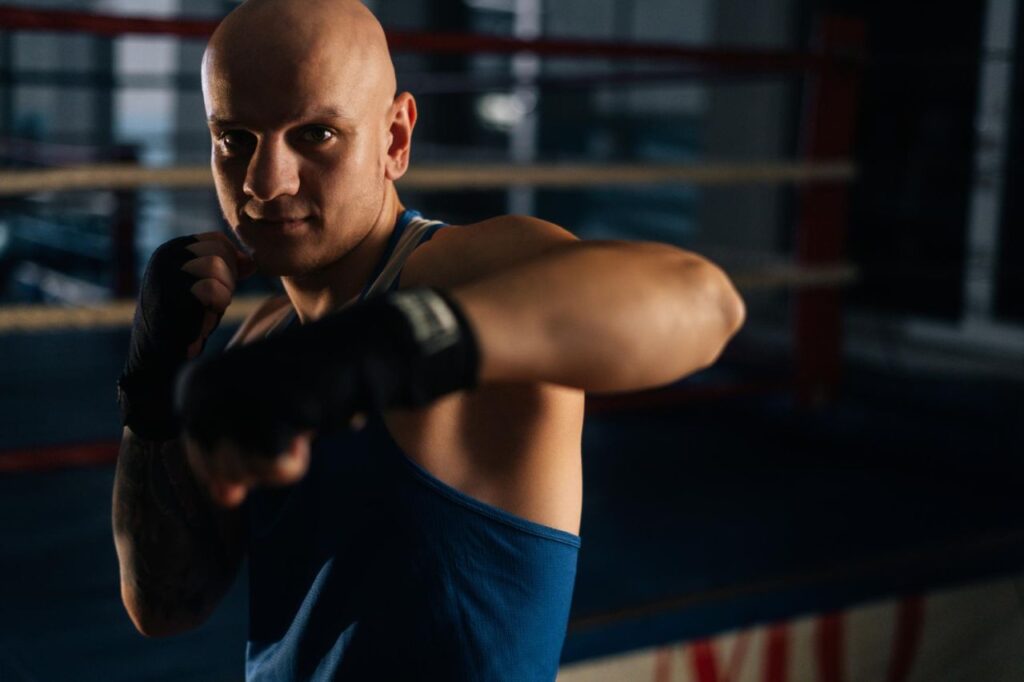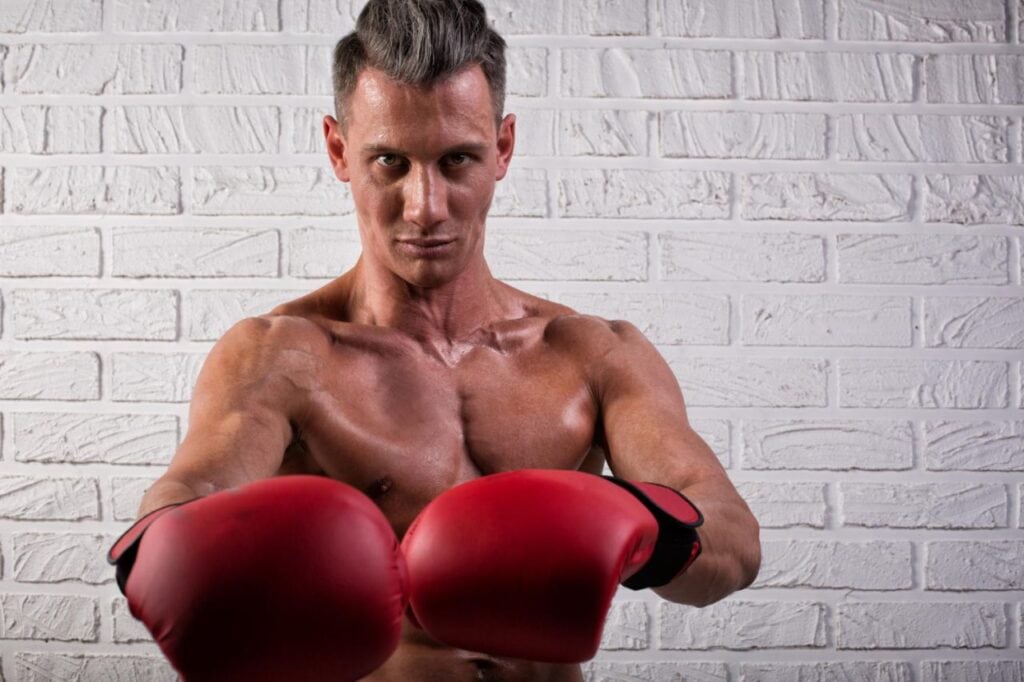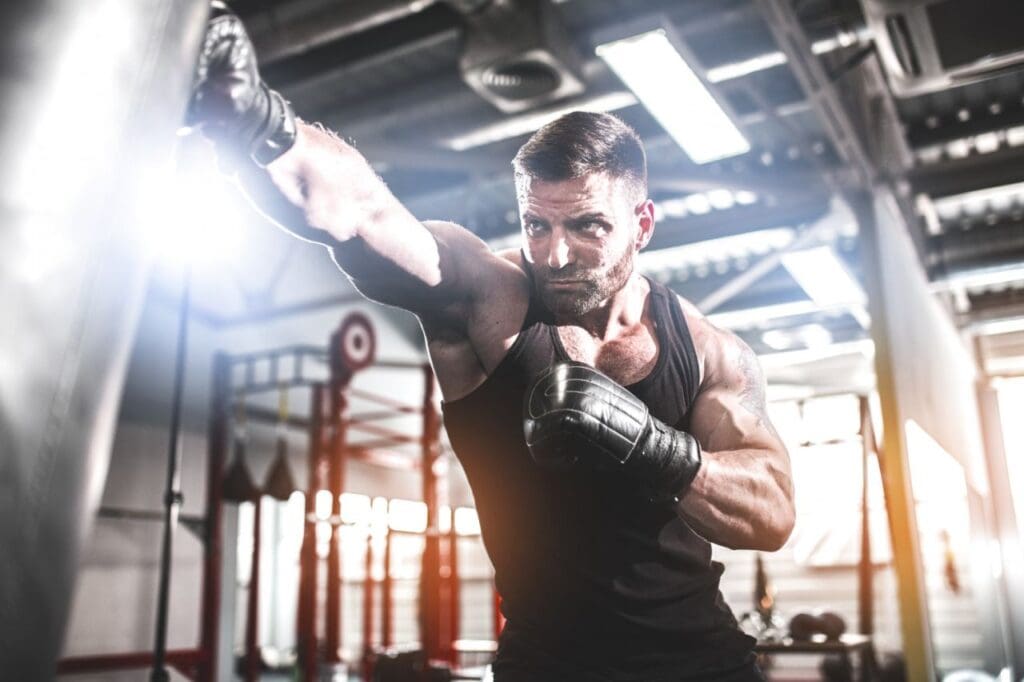Boxing seems to be a not-so-complicated sport, but believe me, it is more than just throwing punches. It requires coordination, balance, endurance, strength, well-performed boxing punches, and proper footwork. Plus, it is not just about attacking the opponent but mainly about defense.
No matter what your age, boxing is a great way to get in shape. Boxing is known for its intense cardio workout, and it also helps build strength and endurance. But if you're new to the sport, it can be tough to know where to start. Here are a few tips on what you should do as a beginner boxer.
Beginner Boxing Tips To Get Started
Throw light but sharp punches
An unfortunate mistake of beginners is that they want to hit the bag with full strength. They want to focus on the knockout punch.
If you want to punch with power, you will only use the strength of your arm and shoulder muscles, which seems to be OK, but instead, you should use your body to throw the punch.
That way, you will be able to strike much bigger. For a power punch, your body should be relaxed. Try punching with tight muscles and with loosening muscles. You will feel the difference.
Also, if all your punches are the level of the maximum, you will not have any energy to train long. Your boxing training time will not be long enough. If you get out of breath after 1 minute, that will get you nowhere.
Shorter punch combinations
As you are a beginner, there is no need to do complex boxing combinations. 3-4 punch combos will do. As you get better, you can add more punches to your combos. It is better to be good at 4-5 combination types than doing a lot of badly-performed ones. And, throw a jab between.
Drink lots of water
No matter if you hit the bag at home or spare with an opponent, always drink plenty of water.
Proper boxing training for beginners is tough, and you sweat like mad, so you have to refill yourself to be hydrated. If you are dehydrated, you will not have the energy to train.
Learning boxing
If you go to a boxing gym, get in touch with others, and ask for advice. Watch how the best boxers train and “steal” their best boxing moves. Also, there are tons of materials online from which you can learn.
The more tricks and techniques you know, the better since you will see and understand your weaknesses. But, the internet is also full of boxing training tips.
Correct breathing technique
Do not hold your breath! Do not forget you should exhale when you punch. The right breathing method, while boxing is crucial to have the energy for the whole workout. Plus, you can handle the body shots reaching you better as well.
If you are totally out of breath, inform your trainer and have time to calm down.
Keep your head up
Many beginners look on the floor while they punch the bag or spare. Big mistake! How do you know where your opponent is and what he is doing if you cannot see him?
Get harder workouts gradually
As with all other sports, you should start slowly and gradually increase the length and hardness of your training. If you push yourself to the limit from the first days, you will get tired fast, both mentally and physically. Your body and mind need time to get used to this type of workout. You do not want to quit after a month, do you?
Conditioning workout is really important particularly cardio. For strength I don’t recommend lifting weight, do bodyweight training instead. And, do core exercises to improve your stability. Healthy eating is also important besides beginner’s boxing drills.
Proper boxing stance

No matter if you hit the punching bag or fight with someone, always keep the proper boxing stances. This state will help you to throw more powerful punches and support the defense. Also, it provides better stability, flexibility, mobility, and balance.
Hands high and elbows down
If you watch a boxing match, you can see fighters lowering their arms, but since you are a beginner, you should not do that yet. Always keep your hands high and your elbows low, close to your body. Keep this position even if you punch a heavy bag. Also, keep your chin down.
Keep hitting
If you spare with someone or punch a heavy bag, keep hitting no matter what. Your contestant should know you are not quieter. Don’t forget to protect your head, keep your fists high.
Be focused
In the ring, there is no time to lose your focus. Your opponent waits for that one second when you do not focus on knocking you out. When you hit the bag, imagine you are fighting with someone and keep concentrate as if you are in a real fight.
Throw body punches
Do not only practice for hitting the head. Body shots are vital. Hit the body of your opponent from every angle. As it is said,
Keep your opponent wondering what your next punch will be
If you always throw the same punches and combos, your opponent will quickly find a way to protect himself and find your weaknesses. So, keep them guessing. This way, he will also get tired in mind sooner or later and lose his focus.
Footwork drills
Good boxing footwork is vital for defensive and offensive reasons. It is as essential as the correct ways to punch. During sparring or heavy bag training, always move but keep the proper boxing stance.
Have your ever seen fighters standing in front of each other during the who match? I guess you haven’t. It is a critical boxing technique.
Enjoy your training
I have tried several sports in my life, but none of them makes me so excited as boxing. I know I’m not going to be a fighter, but boxing exercises have helped me to release stress and boost my endurance.
As with everything, do not take it too seriously unless you want to be the next Tyson. Of course, you should give your best while training, but do not make it boring. Boxing for beginners is a bit hard at the beginning, but the more you practice, the more you will enjoy it.
Essential boxing equipment for home
To learn the boxing basics, you don’t need any equipment at all. I mean, you start with shadowboxing to get familiar with footwork, stance, and punches. Just do it in front of a mirror.
That’s the best way to get used to martial art. For conditioning running, jumping rope and bodyweight exercises (push-ups, sit-ups pull-ups) will do.
The next step is to get boxing gear for home for your boxing workout routine. A free-standing or hanging heavy bag will do to practice the learned boxing techniques for beginners, plus to develop punching power.
Other types of punching bags that are worth considering are the speed bag or double end bag that helps improve hand-eye coordination, hand speed, rhythm, and other defensive and offensive boxing skills.
There are different types of punching bags, but most of them are for advanced fighters.
To protect your hand and knuckles, you should also invest in hand wrap and gloves.
Always wear boxing gloves
The joints and small bones of the hand and wrist are very vulnerable to huge impacts. So, always use gloves and wrap your hands before hitting the bag to prevent injury.
That is particularly important if you do a beginner boxing workout for developing punching power. Hitting the heavy bag is dangerous, so spend time with hand protection.
Anyway, I always wear gloves no matter what type of training I do since that is how it goes in the boxing ring.
Get a boxing coach
Well, not everyone wants to be the next Mike Tyson, most of us do boxing to get better in shape or develop self-confidence. The best way to learn boxing is to get a membership to a boxing gym where they teach you the basics and get inspired by others.
If you can’t afford to join a gym, there are tons of sources online from which you can learn and get boxing tips. A good example is expertboxing.com, where Johnny offers the best boxing tips for beginner boxers.
A good start in boxing requires a leader.
These are just a few boxing tips for beginners, but maybe they are the most important ones. As you develop both mentally and physically, and the various techniques come naturally, you will be able to pick more professional technical skills.
Just keep in mind that boxing for beginners is like any other sport; you should practice, practice, and practice. If you want to practice at home, look around on this website to find reviews of at-home equipment.
Basic Boxing Moves
Jab
Start in boxing stance. As fast as possible, extend front arm straight out as you step forward with front foot. Your front hand and front foot should connect simultaneously.
Pull glove back to face as fast as possible to reset. The jab, usually referred to as “1,” is your quickest punch and uses the least amount of energy.
Cross
Start in a boxing stance. Step front foot forward as you rotate at the hips, pivot rear foot forward, and extend rear arm straight out. Don’t cock arm back. Also remember to keep weight evenly distributed through both legs.
Pull your fist back to face as quickly as possible to reset. The cross, usually referred to as “2” is your power punch, since you can throw your whole body into it.
Hook

Start in a boxing stance. Lift your front elbow to be parallel with the floor, like you’re stirring a pot. Pivot on front foot to turn knee and roll hip over for more power. Rotate everything at the same time to connect.
Keep arm at a 90-degree bend and don’t extend through the punch. Repeat on the opposite side for rear hook. The hook — lead is “3” and rear is “4” — is a short range punch, so always keep opposite hand up to your face to guard.
Uppercut
Start in boxing stance. On lead side, drop shoulder (like a side crunch) and load legs by bending at the knees slightly.
Keep your arm bent and throw a punch from the ground up as you turn your hip and pivot your foot. Don’t curl your arm. The power won’t come from biceps; it comes from the legs. Pull fist back to face as quickly as possible to reset.
Like the hook, the uppercut — lead is “5,” rear is “6” — is a short-range shot, so don’t reach for it and end up with your knuckles in the air Mortal Combat-style. Keep the opposite fist at your face for protection.
Basic Defensive Boxing Techniques
Slip
Start in boxing stance with fists up to guard. If opponent throws toward your right side, rotate from waist to left, drop left shoulder, bend knees, and crunch to left to slip outside the line of opponent’s shot.
Repeat on right side if opponent throws to left. Slipping is a defensive boxing technique and puts you in a position to counter as you rise back up to starting stance.
Duck
Start in boxing stance. As opponent throws a shot (like a hook), send hips back and bend knees (like a squat), then shift your body weight from one leg to the other as you rise back up.
Like slipping, ducking is a defensive technique. Unlike slipping, you’re ducking under the shot and rising up on the other side to throw a counter.
The Boxer Workout
Proper boxing workouts require effective techniques and conditioning. Individuals must be able to land punches effectively while having the endurance needed to last several rounds at a time. This means building physical strength while achieving mental toughness.
Boxers utilize a number of different workout training techniques to optimize their performance. Here’s some common training variations performed by boxers.
- Strength training: 2-3 times a week
- Punching bag work: 2-3 days a week
- Speed bag: 2-3 days a week
Many boxers will also run daily in order to improve endurance and stamina. The cardio intensive nature of boxing allows them to drop body fat while getting ripped. Although strength training is not required—many boxers choose to lift weights two or more times per week.
What Do Boxers Eat? (The Boxer Diet)
Like many other athletes—boxers must follow strict dietary guidelines in order to help them reach peak performance.
Here’s some foods commonly included in the diets of many boxers:
Complex Carbs
Carbohydrates help boxers perform over extended periods of time. Focus on complex carbs low on the glycemic index in order to enjoy long-lasting energy.
Proteins
Protein synthesis helps to improve muscle growth while preventing long-term damage. Additionally protein aids in cellular and tissue regeneration.
Fats
Healthy fats give the body energy and help to support cellular growth. They also assist the body in hormone production.
A boxer’s grocery shopping list may contain variations of the following items:
- Chicken
- Fish
- Lean steak
- Sweet potatoes
- Brown rice
- Vegetables
- Eggs
- Whole grains
Boxers typically eat high amounts of calories due to their cardio intensive workout routines. The high-intensity nature of boxing makes it more useful for fat loss compared to running and other steady state cardio.
What Are The Basic Skills Of Boxing?

Unlike other sports—boxing has few movements, but they require careful refinement in order to master techniques.
The most commonly taught skills in boxing courses are:
- Stance
- Footwork
- Punching
- Speed
Each of these skills must align with one another synchronously in order to achieve mastery. Fundamentals are critical in boxing and even advanced fighters must continually improve movements to become a top level athlete.
What Are The Basic Techniques In Boxing?
Boxing consists of very few basic techniques compared to other sports. Here’s the main staples beginners should focus on learning:
- Jab
- Cross
- Hook
- Uppercut
- Slip
- Roll
The basic skills of boxing are simple to perform, yet difficult to master. Boxing techniques can be performed at home by using a punching bag, but who has the time to work with a trainer on a regular basis?
Conclusion
Most clubs provide coaching in boxing by fully-qualified coaches, as well as offering fitness and resistance training. Most clubs welcome total beginners, and people starting out will be fine in a tracksuit.
Club members are never forced to box competitively. In actual fact, relatively few do box competitively, but for those who want to (and who are good enough) there are many opportunities.
Amateur or Olympic-style boxing is a healthy, well-regulated sport operating under tight medical supervision and actually has an excellent safety record.
Boxing is a demanding sport that takes time and effort to perfect. However, with the right beginner boxing tips, any person can start learning the basics of this sport. In this blog post, we’ve outlined some basic defensive boxing techniques and boxing moves you can use as a beginner boxer. We’ve also shared what boxers eat and some of the basic skills you need to know before stepping into the ring.
- Find a gym. Boxing gyms aren't typically found in the yellow pages, but there are resources on the internet that can lead you in the right direction. ...
- Be sure the gym is within striking distance. ...
- Be open-minded. ...
- Choose your coach carefully. ...
- Do judge the gym by its cover.
So, can boxing be self-taught? Boxing can be self-taught but it's not the quickest and most effective way to become better at the sport because you aren't able to tap into the knowledge of a boxing coach who would be able to help you one to one.
Best Age to Start
Specialists in sports medicine believe that boxing classes are better to start from 9-10 years. Starting too early could result in putting the student off, as boxing is hard work and not always as fun as team sports, such as football or rugby.

